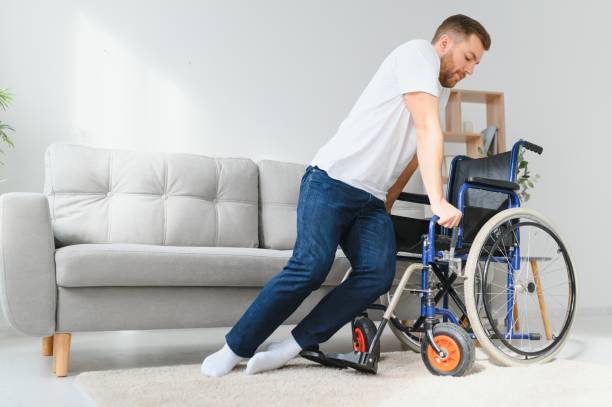Paralysis is the loss of voluntary muscular movement in one or more parts of the body due to damage to the nervous system or muscular tissue or due to metabolic disturbances in the neuromuscular function.
Paralysis can interrupt blood flow, normal function of organs, breathing, swallowing, speaking, sexual responses and the ability to urinate or defecate voluntarily. This depends on the severity of the condition and the part of the body it affects. Paralysis can be temporary or permanent, depending on its cause.
Types of Paralysis
- Partial Paralysis: This is when you still have some control over or feeling in the paralysed muscle.
- Complete Paralysis: When there is no feeling at all or control over the paralysed muscle.
- Localised Paralysis: This affects only one part of your body, like your feet, hands, face, etc.
- Generalised Paralysis: This is when the paralysis affects a wider area of your body, like from your waist downward, the same area on both sides of the body, the four limbs and so on. They are grouped according to where the spinal cord is injured.
Causes
Some people develop paralysis due to an accident or medical condition such as stroke, multiple sclerosis, or spinal cord injury. While some others may also be born paralysed. Other causes of paralysis include:
- Congenital disabilities.
- Cerebral palsy.
- Neurofibromatosis.
- Traumatic brain injury.
- Post-polio syndrome.
- Head or neck cancer.
- Brain tumour.
- Sleep paralysis.
- Muscular dystrophy.
Symptoms of Paralysis
The symptoms of paralysis are determined by the cause or type, but the easiest thing to notice is the loss of muscle function in one or more body parts.
Other symptoms include:
- Stiffness.
- Muscle weakness.
- Numbness or pain in the affected muscles.
- Visible signs of muscle loss (muscle atrophy).
- Involuntary spasms or twitches.
Treatment
Paralysis is treated based on its underlying cause; the treatment options include:
- Physical therapy.
- Surgery or amputation.
- Occupational therapy.
- Medication such as muscle relaxers, botox, etc.
- Mobility aids such as braces, wheelchairs, mobile scooters and other devices.
In most cases, paralysis isn’t completely curable. Still, a series of tools, strategies and a combination of treatments can help manage the condition, and sometimes, patients may start to improve after a while.



